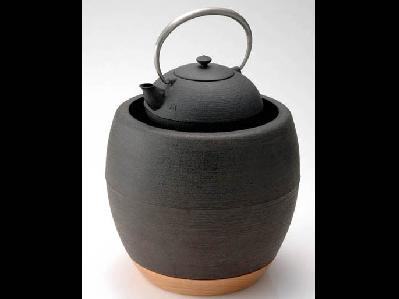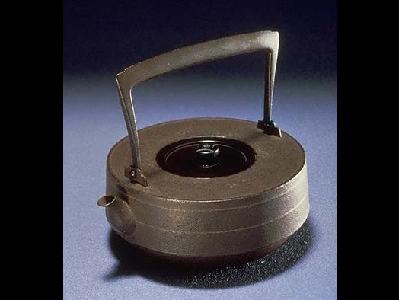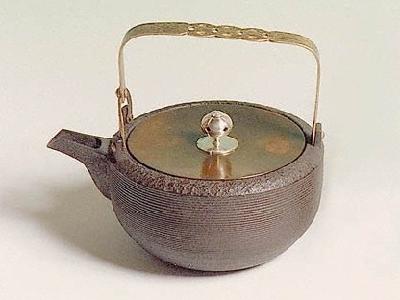山形鋳物 Yamagata-imono Yamagata Iron Casting
|
In the middle of the Heian period, Minamotono Yoriyoshi visited Yamagata region in order to resolve the Battle of Abe Sadatou and Munetou. Foundry craftsmen accompanying Yoriyoshi discovered that the sand in the Mamigasaki River running through Yamagata City and the soil around Chitose Park were suitable for the iron casting process, and some of these people stayed and started production. This was the beginning of Yamagata iron casting.
It is reported that in 1356 when Shibano Kaneyori came to Yamagata and built Kasumiga Castle, nine local foundry men were ordered to make iron castings and offer their work to him.
In 1615, Seikichi Shouji, one of the nine most recognized craftsmen in Dou-machi, after visiting Kyoto to research the casting business there, invented “tatara”, a fan device that could be operated by foot. With this revolutionary device, the technology of Yamagata iron casting was established.
Around 1938, Dou-machi had forty production houses with about eight hundred workers. Both sides of the main street were mostly occupied by these manufacturers, continuously producing practical goods such as hibachi, tea kettles and Buddhist alter fittings.
In 1974, with continued prosperity, Do-machi, which had been the center of the casting industry for a long time, became too small to accommodate the flourishing businesses, and they were transferred to a new industrial complex called Yamagata Casting Industry Danchi in Imono-cho. The following year, Yamagata iron casting was recognized as a traditional art by the Ministry of Economic Affairs.
It is reported that in 1356 when Shibano Kaneyori came to Yamagata and built Kasumiga Castle, nine local foundry men were ordered to make iron castings and offer their work to him.
In 1615, Seikichi Shouji, one of the nine most recognized craftsmen in Dou-machi, after visiting Kyoto to research the casting business there, invented “tatara”, a fan device that could be operated by foot. With this revolutionary device, the technology of Yamagata iron casting was established.
Around 1938, Dou-machi had forty production houses with about eight hundred workers. Both sides of the main street were mostly occupied by these manufacturers, continuously producing practical goods such as hibachi, tea kettles and Buddhist alter fittings.
In 1974, with continued prosperity, Do-machi, which had been the center of the casting industry for a long time, became too small to accommodate the flourishing businesses, and they were transferred to a new industrial complex called Yamagata Casting Industry Danchi in Imono-cho. The following year, Yamagata iron casting was recognized as a traditional art by the Ministry of Economic Affairs.
- address
- Imono-cho 10, Yamagata, Yamagata Prefecture 990-2351
- name
- Iron Casting Association of Yamagata
- phone
- 023-643-6031
- imono10@chuokai-yamagata.or.jp
- hp
- http://www.chuokai-yamagata.or.jp/imono/














